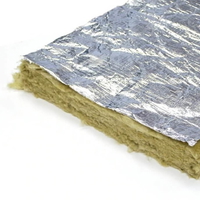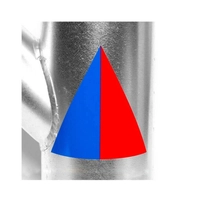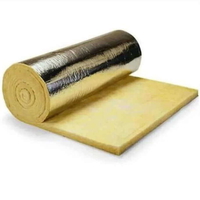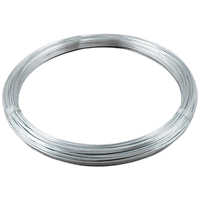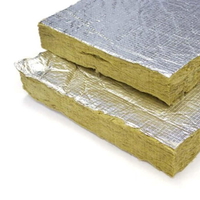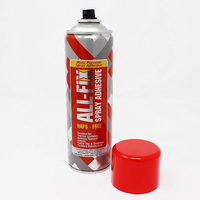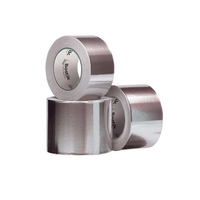Insulation stick pins with washers are used to mechanically secure the duct insulation to the ductwork. It is also used to effectively secure the insulation on smooth surfaces such as attenuators, chambers and enclosures.
The box of insulation stick pins consists of a pin, firmly mounted on a high-quality self-adhesive base. Locking washers are supplied in each box.
Product Specifications:
- Product Quantity: 500pcs.
- Product Size: 62mm and 110mm
Key Features:
- It is used to mechanically secure the duct insulation in place.
- They are strong, durable and easy to use.
- They can be used to secure mineral wool, rock wool and many other insulation materials.
- Box containing 500 self-adhesive pins with washers.
- Corrosion-resistant insulation stick pins.
Application:
- Surfaces should be clean and dry, free of dust, grease, oil and any other loose matter.
- Insulation stick pins should be applied at a temperature range of +15°C to +25°C (+60°F to +80°F).
- Remove the protective release paper taking care not to touch the adhesive.
- Place the hanger in the required position and press the base against the surface to be insulated
- Insulation can be impaled immediately and firmly locked with locking washers, but maximum strength of adherence is achieved after 24 hours.
- If necessary, cover the pin with a protective cap.
- Insulation stick pins are available in 62mm and 110mm.
- Comes in a box of 500pcs
- Insulation stick pins help secure duct insulation.
- Self-adhesive, easy to use.
- Corrosion-resistant, strong and durable insulation stick pins
| Product Type | Insulation Stick pins |
| Box Quantity | 500 pcs per box |
| Size | 62mm and 110mm |
| Base Material | Galvanised steel. |
| Base Dimensions | 50 x 50 mm (2” x 2”) |
| Base Thickness | 4 mm |
| Application Temperature | +15 °C to +25 °C (+60°F to +80°F) |
| Service Temperature | - 40 °C to +80 °C (-40°F to +180°F) |
| Shank Material | Aluminium |
| Shank Dimensions | 2,7 mm |
| Shank Length | 62mm and 100mm. |
| Locking washer Material | Galvanized spring steel |
| Locking washer Dimensions | 32 mm x 30 mm (1-1/4” x 1-3/16”) |
| Locking washer Thickness | 4 mm. |
| Free Collections Available |
|---|
| Save on delivery charges and collect the order for free from a warehouse near you. Just choose the In-Store Pickup option at the checkout or call: 03303130245 |
| Free pick-up locations include - Glasgow, Birmingham, Chorley, Gosport, Oxfordshire, Fareham, Washington, Newmarket, Nottingham and Leeds |
| Delivery Terms | |
|---|---|
| Order Value (Excluding VAT) | Delivery Condition |
| No minimum order |
Free Delivery within 25 Miles of Erdington, Birmingham |
| Orders above £125 | Free Delivery within 25 miles of our warehouses in Glasgow, Birmingham, Chorley Gosport, Oxfordshire, Fareham, Washington, Newmarket, Nottingham and Leeds. |
| Orders above £370 | Free Delivery across mainland GB |
| Delivery Charges | Carriage costs start from £19.50, Ex.VAT for postcodes that do not fall under the free delivery criteria |
When securing insulation and boosting energy efficiency, self-adhesive insulation stick pins with washers are key. They keep insulation in place, reduce energy costs, and are easy to install. To use them, align pins, prepare surfaces, apply, and firmly press them. Don't forget the washer for added support. Select pins based on size, length, and match with washers. Regularly clean and check for damage, keeping them in a cool, dry spot. Ideal for ducts and diverse settings, these pins are durable and corrosion-resistant. Secure insulation effectively with these practical tools.
Key Points
- Ensure insulation stability with adhesive backing on stick pins.
- Use washers for added reinforcement and longevity.
- Choose appropriate size for effective insulation support.
- Follow manufacturer's guidelines for proper installation.
- Maintain stick pins and washers for optimal performance and durability.
Benefits of Self-Adhesive Insulation Stick Pins
Self-adhesive insulation stick pins provide a convenient and efficient solution for securing duct insulation. When you use these stick pins, you're not just ensuring that your insulation stays in place; you're also setting yourself up for energy savings. By keeping your insulation secure, these stick pins help maintain the efficiency of your heating and cooling systems, ultimately reducing your energy consumption and costs.
The best part about these stick pins is their easy installation. You won't need to spend hours fumbling with complicated tools or techniques. With just a few simple steps, you can have your insulation securely fastened in no time. This simplicity not only saves you time and effort but also makes the whole process much more accessible, especially for those new to DIY projects.
Installation Guide for Stick Pins With Washers
To effectively install stick pins with washers for insulation, ensure they are aligned correctly with the designated markings on the surface. Proper alignment ensures that the insulation remains securely in place, providing maximum energy efficiency. Before installing the stick pins, it is crucial to prepare the surface properly. Make sure the surface is clean and free of any debris that could affect the adhesion of the self-adhesive base. Here is a simple guide to help you with the installation process:
|
Step |
Instructions |
|
1. Surface Preparation |
Clean the surface thoroughly. |
|
2. Marking |
Mark the designated spots for stick pin placement. |
|
3. Peel and Place |
Peel off the adhesive backing and place the pin. |
|
4. Press Firmly |
Press the pin firmly onto the surface. |
|
5. Attach Washer |
Attach the washer to the pin for reinforcement. |
Selecting the Correct Insulation Stick Pins
When choosing insulation stick pins, consider the specific size requirements to best suit your insulation needs. The product selection includes various sizes ranging from 62mm to 203mm, catering to different insulation thicknesses. To guarantee a secure installation, choose stick pins that are long enough to penetrate through the insulation and into the substrate effectively. Additionally, the installation techniques vary depending on the insulation material and the surface you're working with. Follow the manufacturer's guidelines for the best results.
When deciding on the right stick pins, take into consideration the thickness of your insulation and the type of surface you're attaching it to. The washers included with the stick pins provide added reinforcement and stability, especially for heavier insulation materials. Make sure to match the size of the washers with the stick pins for proper support. By selecting the appropriate stick pins and washers, you can effectively secure your insulation in place and maintain energy efficiency.
Maintenance Tips for Stick Pins and Washers
Regular cleaning of stick pins and washers is crucial to prevent dust buildup and maintain their adhesive strength for optimal insulation performance. Preventive care is essential to ensure the longevity of these components.
Inspect the adhesive pads regularly for any wear or damage, as this can affect the insulation's attachment. If you notice any signs of wear, replace the worn or damaged stick pins and washers promptly to prevent the insulation from coming loose.
Storing stick pins and washers in a cool, dry place is vital to preserve their adhesive properties and extend their effectiveness. Following the manufacturer's guidelines for the proper usage and maintenance of stick pins and washers will maximise their lifespan.
Applications of Insulation Stick Pins
Insulation stick pins play a significant role in securing duct insulation effectively, ensuring ideal energy efficiency. These handy tools find their applications in various industrial settings where insulation is essential for maintaining peak temperatures. Whether in factories, warehouses, or commercial buildings, insulation stick pins provide cost-effective solutions for securing insulation materials in place. By using these pins, you can guarantee that the insulation stays put within sheeting and cladding systems, preventing energy wastage and reducing heating or cooling costs.
The durability and corrosion-resistant nature of insulation stick pins make them suitable for both indoor and outdoor use, adding to their versatility in industrial environments. Their design, often made of galvanized steel, ensures long-lasting performance, making them a reliable choice for securing insulation in diverse applications.
Commonly Asked Questions
How do you use stick pins for insulation?
To use stick pins for insulation properly, press the self-adhesive side onto the surface. Attach insulation, secure with fastening clips and washers for stability. Avoid common mistakes, like inadequate pin placement. Stay safe by wearing gloves and eye protection. Enjoy benefits like energy efficiency.
What are the pins for hanging insulation?
When installing insulation, pins are essential. They hold the insulation in place, ensuring correct installation. Use suitable hanging techniques to create a snug and energy-efficient space. Select the appropriate pins for your insulation requirements.
What is stick pin insulation?
Stick pin insulation is a clever method to secure duct insulation. It's simple to install with self-adhesive hangers. Benefits include improved energy efficiency and material stability. The process is speedy, thanks to the washers and foam pad.
Summary
To summarise, self-adhesive insulation stick pins with washers provide a convenient and effective solution for securing insulation in place. By following the installation guide, selecting the appropriate pins, and adequately maintaining them, you can ensure excellent performance and durability.
These stick pins are versatile and versatile and can be utilised in a range of applications, making them a practical option for residential and commercial projects alike. Consider integrating them into your insulation system for dependable and efficient outcomes.








